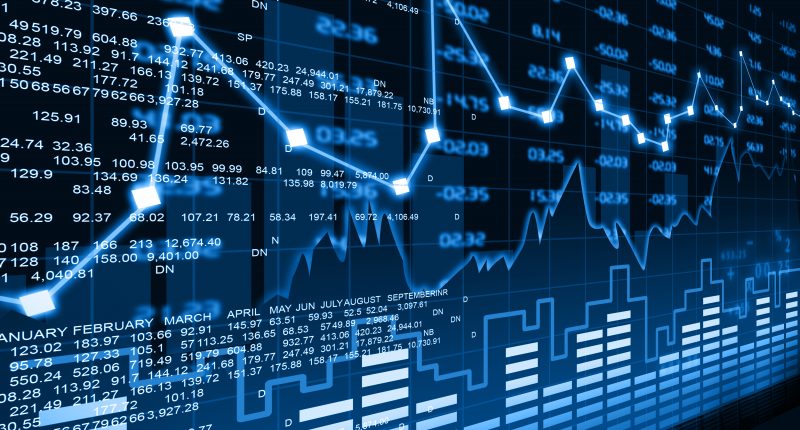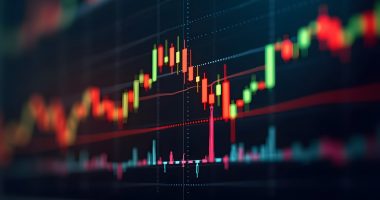Australian shares face mild selling pressure before today’s interest rate decision after Wall Street gave up most of its initial gains and key commodity prices declined.
US stocks finished near session lows as an early advance spluttered. Most industrial metals dropped after China set a more modest economic growth target than expected.
Iron ore fell after China’s state planner sought expert advice to contain surging prices. Oil inched higher. Gold finished flat.
The S&P/ASX 200 will open 12 points or 0.16 per cent in the red, according to futures action. The Reserve Bank meets today and is expected to hike its benchmark rate by a quarter-point to 3.6 per cent.
Wall Street
US stocks struggled to build on Friday’s rebound as trade turned cautious ahead of jobs data and testimony from Federal Reserve Chair Jerome Powell later in the week. An early rally lost momentum once treasury yields reversed early weakness.
The S&P 500 trimmed a 0.8 per cent opening advance to three points or 0.07 per cent. The Dow Jones Industrial Average gained 40 points or 0.12 per cent. The Nasdaq Composite faded to a loss of 13 points or 0.11 per cent.
The S&P 500 hit a two-week high after Goldman Sachs initiated coverage on Apple with a “Buy” rating. The tech giant, which accounts for roughly 7 per cent of the index by weighting, rallied 1.85 per cent. Microsoft and Alphabet also rose.
The broadest of the major indices was coming off its first winning week in four, while the Dow was attempting to build on its first positive week in five weeks. Stocks surged on Friday as treasury yields backed off key levels.
Last night’s rally stalled as the ten-year yield bounced two basis points to 3.98 per cent. Traders view 4 per cent as a critical level for market confidence. Rising yields weigh most on growth stocks whose valuations depend more on future earnings and the cost of borrowing.
“There is a sense of caution among traders and investors as it is this week that we are going to get the most important economic data and that is the US NFP [jobs] data. In addition to this, Jerome Powell, the Fed Chairman, will also be releasing his comments about the Fed’s view of the interest rate and which is also going to keep traders on edge,” Naeem Aslam, chief investment officer at Zaye Capital Markets, said.
Powell fronts congressional committees tonight and tomorrow. The Fed Chair is expected to reiterate the bank’s commitment to keep raising interest rates until it has more evidence that inflation is heading back to target. There are several employment-related reports through the week before Friday night’s nonfarm payrolls report.
“[Powell] will certainly reiterate that the Fed is not yet done with its fight against inflation, that the labor market remains particularly strong, that a soft landing is possible, yet the Fed won’t hesitate to sacrifice growth to abate inflation as soon as possible,” Ipek Ozkardeskaya, senior analyst at Swissquote Bank, said.
Australian outlook
A cautious start coming up ahead of this afternoon’s rates decision. The Reserve Bank meets this morning and is expected to raise the cash rate target by 25 basis points to 3.6 per cent. A rise this afternoon would be the tenth in a row.
“The Australian interest rates market is almost fully priced for a 25bp rate hike this week, and at least two more rate hikes this year, with the RBA’s peak rate now at 4.2%,” IG analyst Tony Sycamore said.
“Since the February Board Meeting, some preliminary signs have emerged that the economy is slowing, including softer wages, GDP, and unemployment data. Unfortunately, the RBA is unlikely to deviate from its new (hawkish) path until it sees evidence that inflation has begun to ease,” he added.
The central bank announces the new cash rate target at 2.30pm AEDT. Also on the economic calendar today: weekly consumer confidence data and monthly retail sales and trade figures.
The S&P/ASX 200 got the new week off to a bright start, rising 0.62 per cent yesterday as bond yields retreated. That tailwind dissipated in the US overnight as US bond markets sold off again (yields move inversely to prices).
Miners loom as a headwind this session. The US materials sector sank 1.65 per cent overnight after China dashed hopes of stimulus announcements at its annual political showcase. BHP and Rio Tinto fell with iron ore prices.
Tech was the pick of the US sectors, rising 0.53 per cent. Also positive were communication services +0.46 per cent, utilities +0.43 per cent and consumer staples +0.33 per cent.
The dollar struggled again against a rising greenback, falling 0.4 per cent to 67.26 US cents.
Companies trading ex-dividend this session include Sonic Healthcare, Qube, Northern Star, Perseus, Lovisa and Viva Energy.
Commodities
Iron ore slumped after China’s state planner revealed it had sought advice on how to contain soaring prices. The National Development and Reform Commission said its price monitoring unit met with industry experts who advised tougher market supervision to combat hoarding, speculation and misleading pricing.
Also weighing on prices, the steelmaking hub of Tangshan announced a second round of curbs on production to reduce pollution.
The most-traded May ore futures on the Dalian Commodity Exchange ended daytime trade 2.13 per cent lower at 897 yuan (US$129.70) a tonne after briefly falling more than 3 per cent. Coking coal and coke also declined.
BHP‘s US-traded depositary receipts dropped 2.75 per cent. The miner’s UK listing shed 2.41 per cent. Rio Tinto gave up 3.29 per cent in the US and 2.8 per cent in the UK.
Copper and other industrial metals retreated after the demand outlook was dulled by a weaker Chinese economic growth target than economists expected. The government set a GDP target of “around five per cent” this year, down from 5.5 per cent last year and below some of the more bullish forecasts.
Also affecting prices was the absence of any stimulus announcements from the annual Two Sessions political showcase.
“The latest comments from the meeting highlight that ‘the government only aims to support and stabilise the economy, instead of issuing massive stimulus’. The market was expecting some policy support for the slowing construction and industrial sector, which would boost demand for industrial metals,” ING commodities strategists wrote.
Benchmark copper on the London Metal Exchange dropped 0.37 per cent to US$8,950 a tonne. Aluminium fell 0.75 per cent, nickel 0.51 per cent, lead 0.66 per cent and tin 0.26 per cent. Zinc firmed 0.28 per cent.
Oil overcame early pressure from Chinese growth worries. Prices rose after Saudi Arabia increased the price of benchmark crude for a second month.
Robert Yawger, director of energy futures at Mizuho Securities USA, said it was the “second month in a row the Saudis have increased the price of their flagship oil in anticipation of increased demand in Asia.”
Brent crude settled 35 US cents or 0.4 per cent ahead at a three-week high at US$86.18 a barrel.
Gold closed unchanged following its first weekly advance in five weeks. Gold for April delivery settled steady at US$1,854.60 an ounce. The NYSE Arca Gold Bugs Index dropped 1.75 per cent.
Battery metal miners backed off a two-week high. The Global X Lithium & Battery Tech ETF retreated 0.63 per cent on the New York Stock Exchange after posting its strongest rise on Friday since January.








